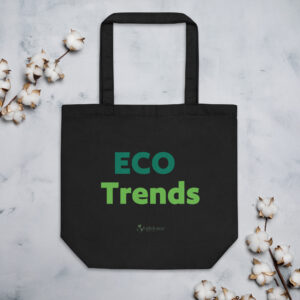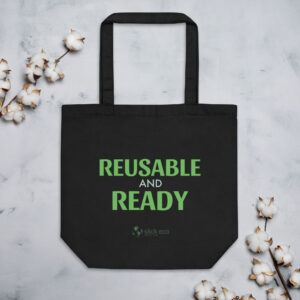The circular economy is a transformative approach to production and consumption, a sharp departure from the traditional linear economy’s “take, make, dispose” model. Instead of viewing used products as waste, the circular economy sees them as resources with enduring value.
It’s about designing goods that can be reused, repaired, or recycled—creating a closed-loop system that minimizes waste and makes the most of materials. Beyond Recycling shifts the focus from just managing waste to rethinking the entire lifecycle of products, aiming for sustainability concepts to thrive not just in theory but in your everyday choices as well.

As you become more aware of sustainability concepts, your role as a consumer gains significant importance in transitioning towards a circular economy. Every purchase decision you make can either contribute to the problem or be part of the solution, pushing for a shift away from disposable cultures. Consumer action involves opting for products that are made to last, choosing brands that prioritize recyclable materials, and embracing practices like sharing, leasing, or even repairing instead of buying new. Your informed choices don’t just reduce your own environmental footprint; they send powerful signals to businesses and policymakers that there’s a demand for more sustainable products and systems.
Foundations of the Circular Economy
As you dive into the world of sustainability, understanding the circular economy is critical. This concept stands out for its focus on designing out waste and keeping resources in use for as long as possible.
Defining Circular Economy
The circular economy is a model for achieving sustainability through an alternative approach to production and consumption. Instead of the traditional ‘take-make-dispose’ route, this concept encourages a regenerative system aiming to minimize waste and maximize resource use. It’s about ensuring that you can get the most from products while generating the least environmental impact.
Principles of Circularity
Three core principles define the circular economy:
-
Design Out Waste and Pollution: From the very start, products are designed to eliminate waste, considering the entire lifecycle and employing sustainable materials.
-
Keep Products and Materials in Use: By designing for durability, maintenance, and the ability to disassemble and recycle, goods are kept in circulation for as long as possible.
-
Regenerate Natural Systems: Instead of merely reducing harm to the environment, the circular economy emphasizes enhancing natural systems through practices like returning valuable nutrients to the soil.
Contrasting Linear and Circular Models
In a linear economy, the process is straightforward: extract resources, make a product, use it, and then dispose of it. This model is unsustainable as it leads to significant resource depletion and waste generation. On the other hand, the circular model is inherently restorative. It advocates for activities like reduce, reuse, and recycle to create a closed loop, reducing the need for new materials and diminishing environmental impact. Rather than products reaching an ‘end-of-life’, they are reintegrated into the economy or the environment as a valuable input, never becoming waste.
-

Fashionably Green and On-The-Go
£16.50 Select options This product has multiple variants. The options may be chosen on the product page -

Reusable and Ready Eco-Friendly Tote Bag
£16.50 Add to cart
Environmental and Economic Benefits
Embracing a circular economy offers you tangible benefits in terms of both the environment and the economy. In this section, you will learn how this system helps to mitigate climate change, reduce resource extraction, and enhance biodiversity, which are critical to achieving sustainability.
Mitigating Climate Change
Adopting a circular economy helps you play a part in fighting climate change. By keeping products and materials in use longer, greenhouse gas emissions from production decrease. For example, less energy is expended, and consequently, fewer emissions are produced if items are reused or recycled instead of being discarded and replaced with new products.
Reducing Resource Extraction
Every year, the demand for new resources strains our planet. By promoting resource efficiency within a circular economy, you contribute to decreasing the need for fresh extraction of raw materials from the earth. This approach not only conserves natural resources but also minimizes the pollution resulting from extraction processes.
Enhancing Biodiversity
Transitioning to a circular economy can yield significant benefits for the world’s biodiversity. When less new material is needed, there’s a subsequent reduction in habitat destruction and the negative impacts on ecosystems. As a result, ecosystems are healthier, and the variety of life within them, known as biodiversity, is better protected. This directly correlates to enhancing the environment for countless species and maintaining ecosystems that humans rely on.
Circular Economy in Action
Transitioning from a traditional linear economy to a circular economy is a vital step towards sustainability. In this landscape, you witness industry innovations that redefine production, policy and regulation that pave the way for systemic change, and consumer empowerment that plays a crucial role in fostering circular practices.
Industry Innovations
Innovations in the circular economy are reshaping how industries operate. Companies are shifting from a make-use-dispose model to sustainable practices like recycling, repair, and remanufacturing. For instance, the Ellen MacArthur Foundation champions businesses that integrate circular design into their products, reducing waste and encouraging recycling. Innovation also includes developing biodegradable materials to tackle plastic pollution, a major environmental challenge endorsed by the United Nations Environment Programme.
Policy and Regulation
Governments play a critical role by enacting policies and regulations that support circular initiatives. They can create frameworks that encourage companies to minimize waste and maximize resource use. For example, regulations can mandate the inclusion of recycled materials in new products or enforce extended producer responsibility, ensuring companies play a part in the lifecycle of their products.
Consumer Empowerment
Finally, your actions as consumers drive change towards a circular economy. By choosing to repair and recycle, or by opting for products made with sustainable concepts, you stimulate demand for circular options. Education about the impacts of purchase decisions, combined with the willingness to embrace new consumption patterns, empowers you to be a part of the solution.
Challenges to Circularity
Transitioning to a circular economy presents a myriad of challenges that intertwine with your daily life, the global economy, and the environment. From systemic shifts to technology integration, read on to understand the hurdles and consider your role in this transformative journey.
Overcoming Systemic Hurdles
You’re part of a vast ecosystem where every product you use and throw away can end up in a landfill, contributing to long-term pollution and waste. Upending this trend means grappling with entrenched supply chains that are linear in design. To move away from the “take-make-dispose” model, it’s necessary for you to advocate for and engage in system change that prioritizes sustainability concepts. This could involve supporting policies that encourage product life extension or exploring new business models that incentivize material reuse.
The Role of Technology
While traditional industries rely on legacy systems that often overlook sustainability, technological innovation holds the key to advancing the circular economy. Your awareness and support of emerging tech can drive growth in areas such as material science, which focuses on designing products for longevity and recyclability. Additionally, the push for better data and platforms can streamline the supply chain, making it easier for you to make informed choices about the products you consume and their circular capabilities.
Transitioning Legacy Industries
Transforming established industries that have long been the backbone of the global economy isn’t a minor feat. Your consumer action can spur this shift, as demand often dictates supply. It’s crucial for industries to innovate and explore new materials, processes, and business models that reduce reliance on finite resources—thereby decreasing overall waste and its associated adverse impacts. By voicing your needs and concerns, you can become an integral force in propelling industries toward growth that doesn’t compromise the health of the planet.
Taking Personal Action Towards Sustainability
Embracing sustainability is not just about large-scale changes; your personal choices and actions can make a significant impact. This section will guide you through adopting a more sustainable lifestyle that aligns with the principles of the circular economy.
Adopting a Circular Mindset
To contribute to sustainability, start by adopting a circular mindset. This means thinking beyond the traditional “take-make-dispose” pattern and striving to create a loop where materials are used for longer and waste is minimized. Begin by evaluating your purchases—opt for products that have a longer lifespan or that can be easily repaired. Support companies that design with circular principles in mind, by producing durable goods and offering repair services or take-back programs.
Engaging in Sustainable Practices
Your daily habits can lead to a more sustainable way of living. Here’s how:
- Reduce: Cut down on consumption. Before buying new, ask yourself if you truly need it or if there’s a way to do without it.
- Reuse: Give items a second life. Shop second-hand, use biomass materials whenever possible, and find creative ways to repurpose products.
- Recycling: Properly separate your waste to ensure materials like plastics, metals, and paper can be recycled and kept in circulation.
- Energy: Transition to sustainable energy sources in your home; consider solar panels or switching to a green energy provider to reduce reliance on fossil fuels.
Advocacy and Community Involvement
Share your journey towards sustainability and inspire others to join the movement. Attend community clean-up events, promote awareness on consumer action, and vote for local initiatives that support recycling programs and green infrastructure. Engaging in community efforts not only expands the impact but also fosters a culture of sustainability.

